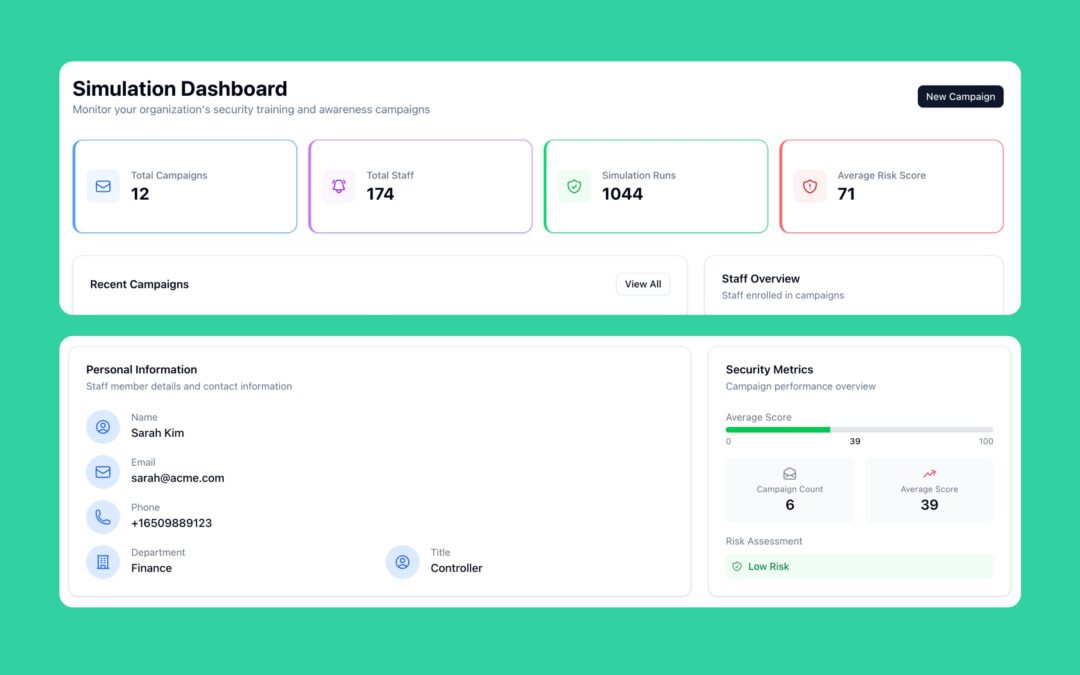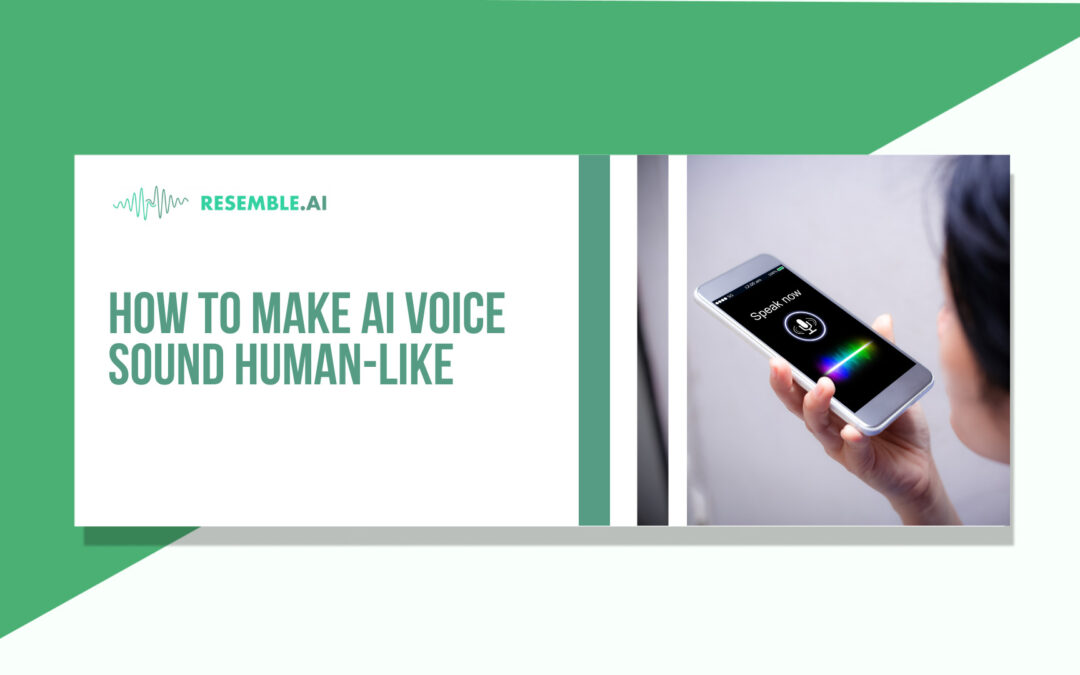Voice-based AI systems are evolving rapidly, becoming more intelligent, interactive, and proactive. The global AI agents market is projected to reach $8.34 billion in 2025, growing from $5.68 billion in 2024. As digital products mature, users increasingly expect voice agents to understand their preferences, manage context, and take initiative rather than wait for instructions.
The emergence of agentic AI voice shapes this new standard. These are voice agents that speak, reason, adapt, and act independently. They operate with goals, retain memory across sessions, and interact with external systems to drive outcomes.
As the finance, education, and healthcare industries adopt more autonomous systems, understanding how agentic AI voice differs from traditional automation becomes essential. This blog will explore what defines agentic voice technology, where it’s heading, and what it means for the future of human-AI interaction.
What Is an Agentic AI Voice?
Agentic AI voice refers to voice-enabled systems that demonstrate autonomy, goal orientation, and context awareness. These agents are designed to react to input, take initiative, make decisions, and follow through on tasks with minimal supervision.
Unlike traditional voice assistants, which rely on static scripts or one-off commands, agentic voice agents behave more like collaborators. They are capable of:
- Initiating conversations based on user behavior or environmental triggers
- Setting and pursuing objectives, such as scheduling follow-ups or completing multi-step workflows
- Adjusting responses dynamically, depending on emotional cues or real-time feedback
- Learning over time, refining how they interact based on past interactions
Agentic voice agents are built on a combination of technologies, including natural language understanding (NLU), long-term memory modules, decision-making frameworks, and adaptive voice generation. These systems are not limited to answering questions; they are built to act with intention.
As businesses move toward intelligent automation, agentic AI voice is becoming essential for use cases where personalization, continuity, and initiative are key.
Why It Matters for the Future of Voice AI?
The emergence of agentic AI voice marks a shift in how users interact with technology. It is no longer about simply automating responses, but about designing systems that can actively support, guide, and adapt to users in real time.
This shift matters because:
- User expectations have changed: People now expect voice systems to understand them, remember context, and handle follow-ups without being prompted.
- Digital services are more complex: From healthcare portals to financial tools, users engage with multiple touchpoints that require continuity and intelligent support.
- Time-sensitive decisions are common: Voice agents that can act in the moment, whether rebooking a flight or flagging an urgent issue, offer real value.
- Personalization drives engagement: Agentic voice agents can fine-tune responses based on individual behavior, leading to more relevant and human-like conversations.
For businesses, this means:
- Reduced workload for support teams
- Faster resolution of user needs
- Increased user satisfaction and retention
- Stronger integration between voice and backend systems
As agentic voice technology matures, it will become a key differentiator in how companies deliver smarter, more proactive digital experiences.
To deliver on these expectations, agentic voice systems rely on a powerful combination of technologies working in sync. Here’s a closer look at what happens behind the interface.
How Agentic AI Voice Works Behind the Scenes
Agentic voice systems rely on a stack of coordinated technologies that enable more than simple back-and-forth conversations. These systems are designed to process, remember, decide, and speak in ways that resemble human intent.
Key components include:
- Contextual Memory Systems
Memory enables the agent to maintain continuity across sessions. This allows it to recall a user’s name, preferences, or progress through a task without being reminded. While agentic behavior starts with memory, it depends heavily on how well that memory is integrated into voice delivery.
- Goal Management Frameworks
These systems help the voice agent identify, prioritize, and complete objectives. For example, following up on an abandoned booking flow or initiating a product recommendation.
- Dynamic Voice Generation
Platforms like Resemble AI make it possible to generate voice responses that adapt in tone, style, and language.
Features like Emotion-Aware TTS allow the voice to adjust to different scenarios, sounding calm in support situations or enthusiastic in onboarding.
- Real-Time Integration with External Systems
Agentic voice agents often pull data from CRMs, user profiles, or scheduling tools to act meaningfully. Resemble AI supports developer-first APIs that allow integration into broader platforms or products, enabling real-time response with voice that still sounds natural and context-aware.
- Feedback Loops for Adaptation
Advanced systems improve over time. Voice editing capabilities like Voice Design help creators refine responses based on behavior analytics, test different tones, or adapt voice output without retraining entire models.
As the technology becomes more autonomous, it brings new responsibilities. From transparency to misuse prevention, several challenges need to be addressed early on.
Challenges and Ethical Considerations
As agentic AI voice systems become more autonomous, they raise complex challenges that go beyond functionality. While the technology holds promise, it also introduces new risks related to trust, misuse, and transparency.
1. Loss of User Control
When voice agents begin initiating actions or making decisions, users may feel uncertain about what the system is doing on their behalf. Clear feedback, consent prompts, and the ability to override decisions are necessary to maintain trust.
2. Ambiguity in Accountability
If an agent makes a wrong call, who is responsible: the user, the developer, or the system? Agentic behavior requires clearer accountability frameworks, especially in sectors like healthcare, finance, or law enforcement.
3. Risk of Voice Manipulation and Impersonation
As agents become more human-sounding and adaptive, the threat of misuse increases. Synthetic voices can be exploited for fraud, misinformation, or social engineering unless authenticated properly.
Platforms like Resemble AI have addressed this with tools like AI watermarking and consent-based voice cloning to ensure traceability and responsible voice use.
4. Cultural and Linguistic Bias
Agentic systems trained on narrow data sources may fail to reflect diverse speech patterns, accents, or communication styles. This can lead to biased responses or unintentional exclusion.
5. Over-Reliance on Autonomy
There is a risk of businesses using agentic voice systems to fully replace human interaction where empathy or discretion is required. The goal should be to enhance, not eliminate, meaningful human engagement.
Addressing these concerns early is critical for building systems that are not only powerful but also trustworthy. Despite the complexities, many industries are already implementing agentic voice capabilities in practical, user-facing ways.
Applications Already Moving in This Direction
Agentic AI voice may still sound futuristic, but several industries have already begun adopting elements of this technology. These applications demonstrate how voice agents are transitioning from reactive support tools to proactive, self-directed systems.
1. Interactive Media and Gaming
Game studios are integrating dynamic voice agents into storylines, allowing characters to respond to players in unscripted, emotionally responsive ways. These agents remember prior choices and react accordingly, adding depth to storytelling. Resemble AI supports this with tools for emotionally adaptive speech and custom character voice design.
2. AI Coaches and Digital Companions
In fitness, mental wellness, and language learning, AI voice agents now act more like personal coaches. They initiate check-ins, track progress over time, and adjust tone based on engagement patterns.
3. Voice-Enabled Education Platforms
Educational tools are evolving to use agentic voice to deliver personalized learning journeys. These systems can ask follow-up questions, provide targeted feedback, and remember a learner’s progress across modules.
4. Smart Customer Retention Systems
Some businesses are deploying voice agents that proactively follow up with customers before churn. These agents access usage patterns, initiate outreach, and offer tailored support or incentives based on context.
5. Virtual Brand Representatives
Retail and D2C brands are creating voice agents that speak in the brand’s tone, engage with customers across multiple channels, and remember previous touchpoints. With Resemble AI’s voice cloning and multilingual capabilities, brands can design consistent, agentic voices that scale globally.
These examples show that agentic voice is no longer just a research topic. It is quietly becoming the foundation for more responsive, intelligent, and brand-aligned digital experiences.
The Road Ahead
According to Deloitte, 25% of enterprises using generative AI are expected to pilot agentic systems by 2025. This number is projected to double by 2027 as AI maturity increases in enterprise environments. In practice, this means:
1. Multi-Agent Collaboration
We are moving toward ecosystems where multiple AI agents will work together. A voice agent could coordinate with a calendar bot, a CRM tool, or even another voice interface to complete multi-step tasks without manual input. This shift requires seamless data exchange and context retention across platforms.
2. Voice at the Edge
With rising concerns around latency and data privacy, many businesses are moving toward edge-based deployment. Voice agents that can operate locally without constant internet access will become essential in sectors like healthcare, defense, and automotive systems.
3. Cross-Platform Continuity
Users increasingly expect their AI voice agents to follow them across devices; phones, desktops, vehicles, and smart appliances without losing context. Building for cross-platform memory and consistent interaction will become a competitive requirement.
4. Hyper-Personalized Voice Experiences
Dynamic voice agents will adapt not just to user commands but also to tone, emotion, and user behavior. Platforms like Resemble AI are already enabling this through emotion-aware speech synthesis and custom voice cloning, making personalization a practical reality.
5. Regulatory and Ethical Frameworks
As AI becomes more autonomous, regulatory attention is increasing. New frameworks are expected to cover transparency, consent, data usage, and AI voice authentication. Resemble AI’s support for AI watermarking aligns well with these evolving standards.
Moving from concept to deployment requires a voice platform that supports flexibility, security, and emotional nuance. This is where Resemble AI becomes a valuable partner.
Why Choose Resemble AI?
As businesses explore agentic AI voice capabilities, the need for customizable, secure, and emotionally intelligent voice solutions becomes more urgent. Resemble AI stands out not just for its feature set, but for how it enables businesses to build responsibly and creatively at scale.
Built for Developers and Creators
Resemble AI offers robust APIs and integrations that fit naturally into product workflows. Whether you are building a voice-driven application, localizing content, or automating audio production, the platform gives you modular control without locking you into rigid templates.
Source: Resemble AI
Speech That Feels Real
Instead of generating generic voices, Resemble AI enables voice synthesis that can adapt its tone, pace, and emotion. This is especially important when building autonomous AI agents that must establish trust in high-stakes contexts such as customer care or healthcare.
You can also explore Live Agents to see how real-time, emotionally nuanced voices work in live use cases.
Source: Resemble AI
Enterprise-Ready Privacy and Controls
With support for on-premise deployments and built-in AI watermarking, Resemble AI helps businesses stay compliant with evolving voice tech regulations. This includes protections against misuse, such as audio manipulation detection, making it suitable for regulated or security-focused environments.
Source: Resemble AI
Flexible for Real-World Use Cases
Unlike platforms that focus only on outbound calls, Resemble AI supports a wide variety of use cases including gaming, storytelling, accessibility, and customer support. Teams can also create branded voice assets using voice cloning tools designed to scale from small pilots to enterprise deployment.
Source: Resemble AI
Conclusion
Agentic AI voice represents a major leap in how machines communicate. It is moving beyond reactive scripts to proactive, context-aware dialogue. As the technology matures, it will reshape how brands engage customers, how products deliver support, and how users interact with digital environments. Teams that want more flexibility, including custom tone, multilingual delivery, ethical safeguards, and cross-channel integration, Resemble AI offers a stronger foundation.
Whether you are designing a self-directed voice agent, producing global content, or building emotion-aware narration, the platform you choose will shape your long-term voice strategy.
Want to see how an agentic voice can work in your product?
Book a live demo and get started today!





